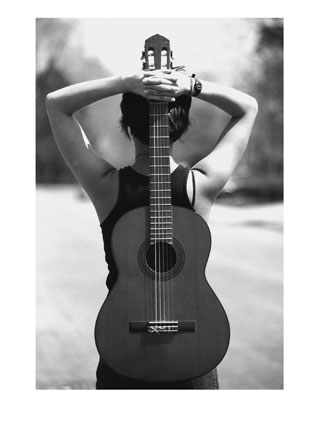
What you’re looking at is the Gibson Les Paul Robot, the automatic transmission of instuments: The guitar tunes itself. You can read some more about it here.
Inevitably, this will lead to a debate of the Pro Tools kind. Is autotuning killing musicianship? Perhaps. However, unlike vocal autotuning, a studio trick that uses computers to ensure that all notes are in tune, this feature simply fixes a problem that guitars themselves have always had. It’s an improvement that allows guitarists to focus on playing, letting them worry less about the mechanical shortcomings of their instrument. Of course, you’ll still need the chops to play the damn thing…
BUT, and here’s the rub, this feature also relieves you of the need to really listen. Tuning a guitar is a constant task–the strings are always in flux, ebbing and flowing in and out of tune, and you need to keep the sound in check at all times. This can be a hassle, especially if your axe drops out of tune in front of a live audience. But knowing how to tune, and knowing what out-of-tune sounds like, inevitably affects your playing on the whole. It’s like drawing a landscape as opposed to photgraphing it–drawing it requires you to see the scene better. And, by seeing better, your eye is more finely tuned to the nuances of the thing you’re looking at.
Of course, for many musicians, tuning is a hassle. It’s understandable. Why bother with getting the damn thing in tune, when all you really want to do is play?! Like automatic transmission vs manual, it becomes a question of how much you care about nuance. Do you want to “feel” the car and enjoy the subtleties of the ride, or do you want to get from point A to B?
Both are respectable preferences, and now guitarists have a similar choice: Enjoy the experience of listening to your guitar and adjusting its settings by hand, or get right to playing music?




 Posted by Mark
Posted by Mark 






